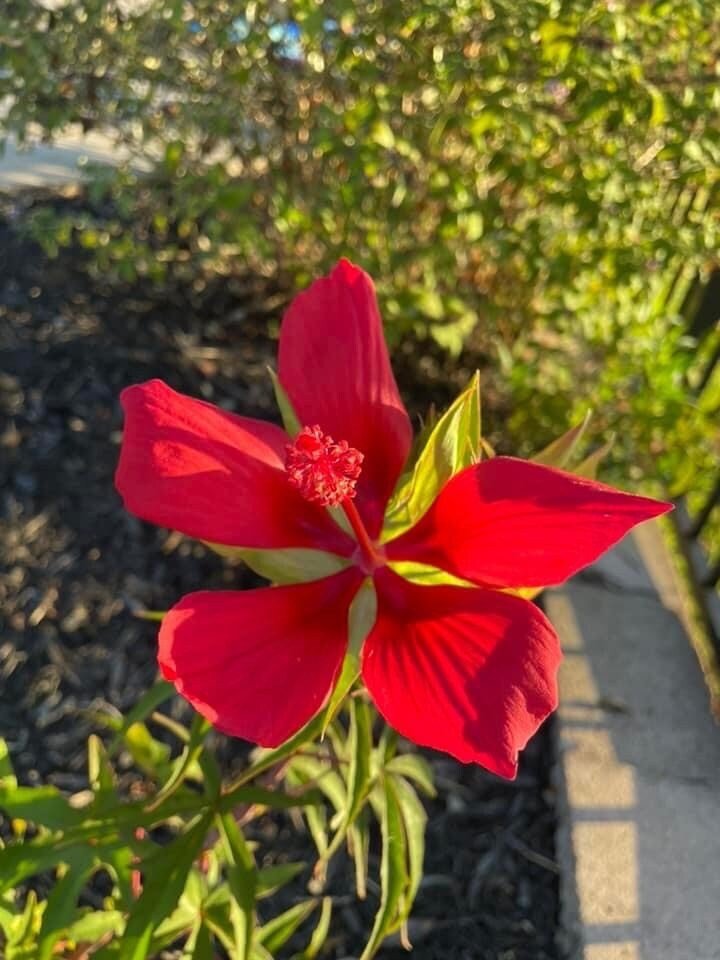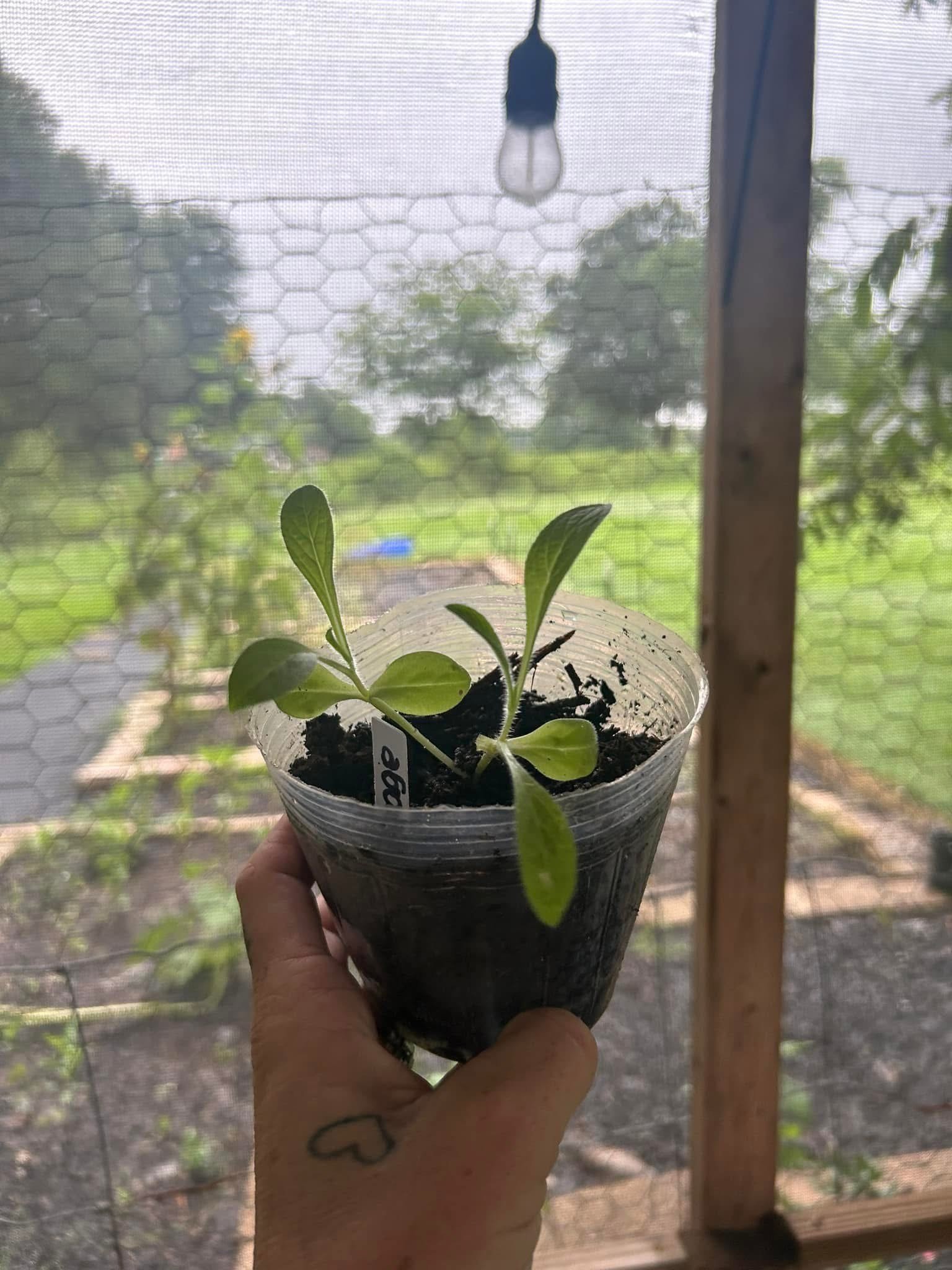 Image 1 of 4
Image 1 of 4

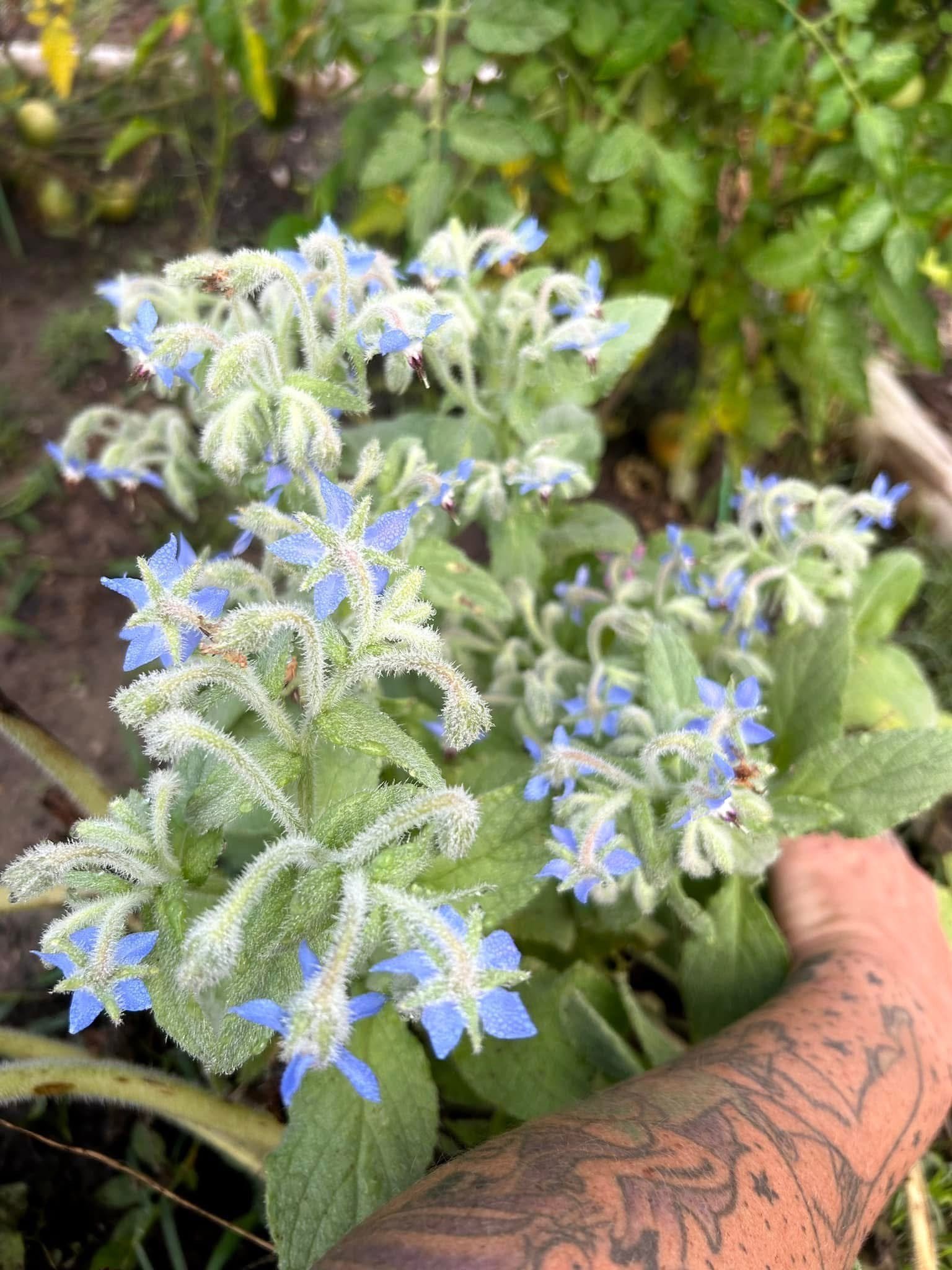 Image 2 of 4
Image 2 of 4

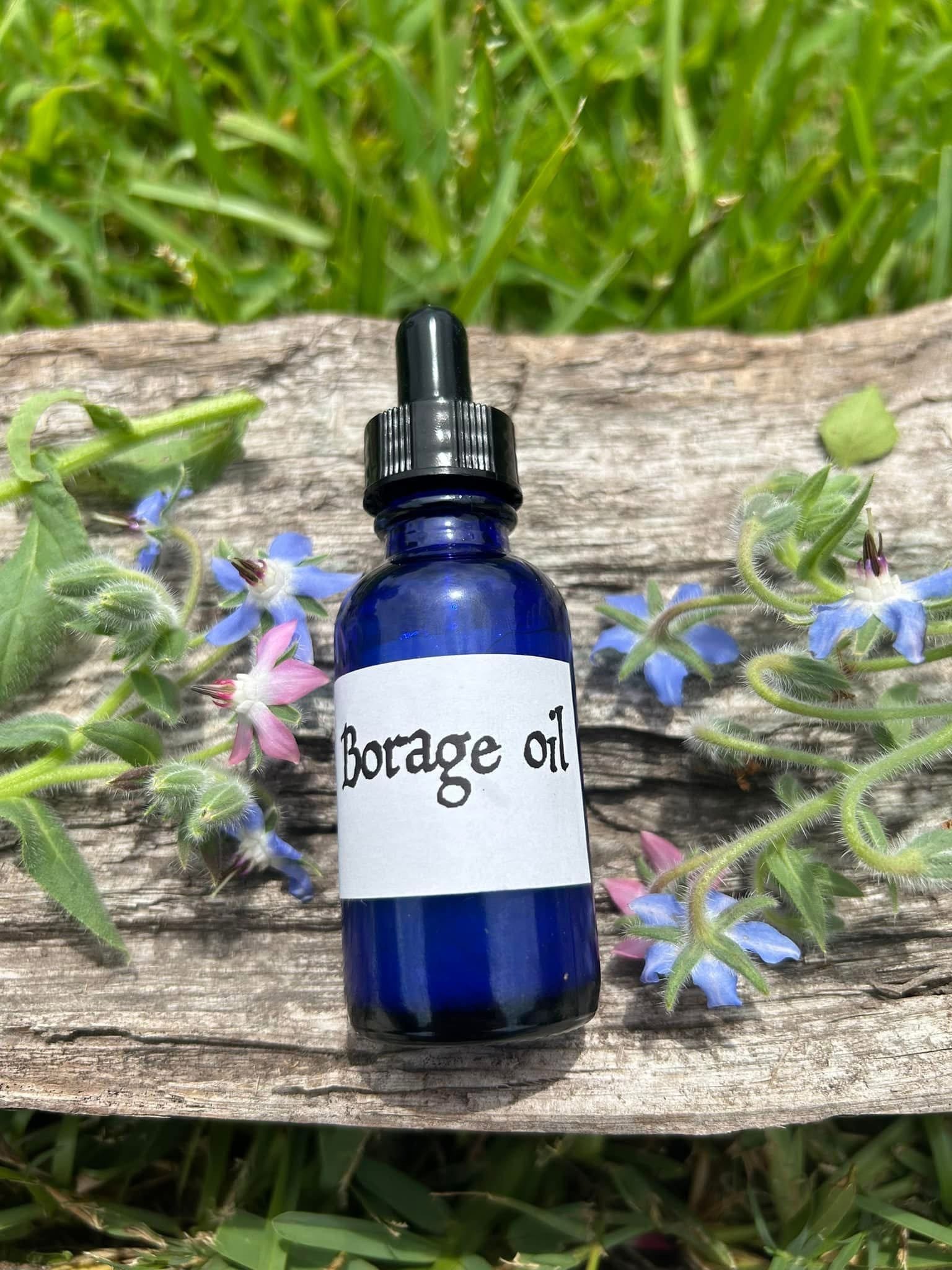 Image 3 of 4
Image 3 of 4

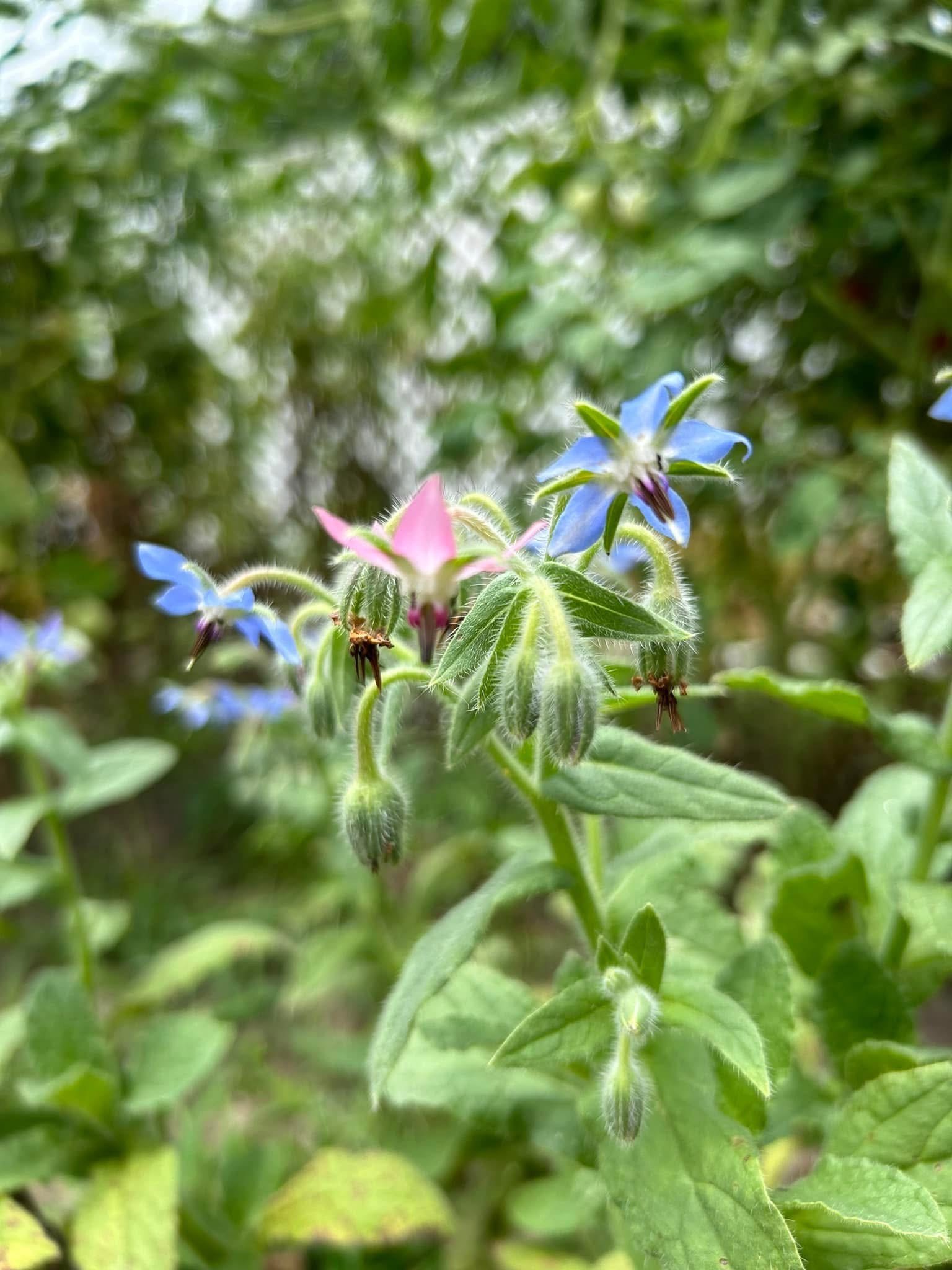 Image 4 of 4
Image 4 of 4





Borage Plant Start
Borage is a hardy annual that thrives in well-drained soil. It prefers full sun and can tolerate drought, making it an excellent choice for home gardens and homesteads. The plant can grow up to 2 feet tall.
Uses and Benefits
Culinary Uses: Borage leaves are often used in salads, as a garnish, or infused in beverages for their cucumber-like flavor. The flowers are edible and can add vibrancy to dishes and drinks.
Medicinal Properties: Traditionally, borage has been utilized for its anti-inflammatory and soothing properties. It is often used in herbal remedies for respiratory issues and skin ailments.
Biodiversity in the Garden: Borage is known to attract beneficial insects, such as bees and pollinators, making it an excellent companion plant. Additionally, its deep roots can help break up compacted soil, improving the overall health of the garden.
Harvesting and Storage
Borage leaves can be harvested once the plant has reached a suitable height. They are best used fresh but can be dried for later use. The flowers should be collected when they are fully open. To retain their flavor and appearance, flowers can be stored in a cool, dry place.
Borage is a hardy annual that thrives in well-drained soil. It prefers full sun and can tolerate drought, making it an excellent choice for home gardens and homesteads. The plant can grow up to 2 feet tall.
Uses and Benefits
Culinary Uses: Borage leaves are often used in salads, as a garnish, or infused in beverages for their cucumber-like flavor. The flowers are edible and can add vibrancy to dishes and drinks.
Medicinal Properties: Traditionally, borage has been utilized for its anti-inflammatory and soothing properties. It is often used in herbal remedies for respiratory issues and skin ailments.
Biodiversity in the Garden: Borage is known to attract beneficial insects, such as bees and pollinators, making it an excellent companion plant. Additionally, its deep roots can help break up compacted soil, improving the overall health of the garden.
Harvesting and Storage
Borage leaves can be harvested once the plant has reached a suitable height. They are best used fresh but can be dried for later use. The flowers should be collected when they are fully open. To retain their flavor and appearance, flowers can be stored in a cool, dry place.
Borage is a hardy annual that thrives in well-drained soil. It prefers full sun and can tolerate drought, making it an excellent choice for home gardens and homesteads. The plant can grow up to 2 feet tall.
Uses and Benefits
Culinary Uses: Borage leaves are often used in salads, as a garnish, or infused in beverages for their cucumber-like flavor. The flowers are edible and can add vibrancy to dishes and drinks.
Medicinal Properties: Traditionally, borage has been utilized for its anti-inflammatory and soothing properties. It is often used in herbal remedies for respiratory issues and skin ailments.
Biodiversity in the Garden: Borage is known to attract beneficial insects, such as bees and pollinators, making it an excellent companion plant. Additionally, its deep roots can help break up compacted soil, improving the overall health of the garden.
Harvesting and Storage
Borage leaves can be harvested once the plant has reached a suitable height. They are best used fresh but can be dried for later use. The flowers should be collected when they are fully open. To retain their flavor and appearance, flowers can be stored in a cool, dry place.
